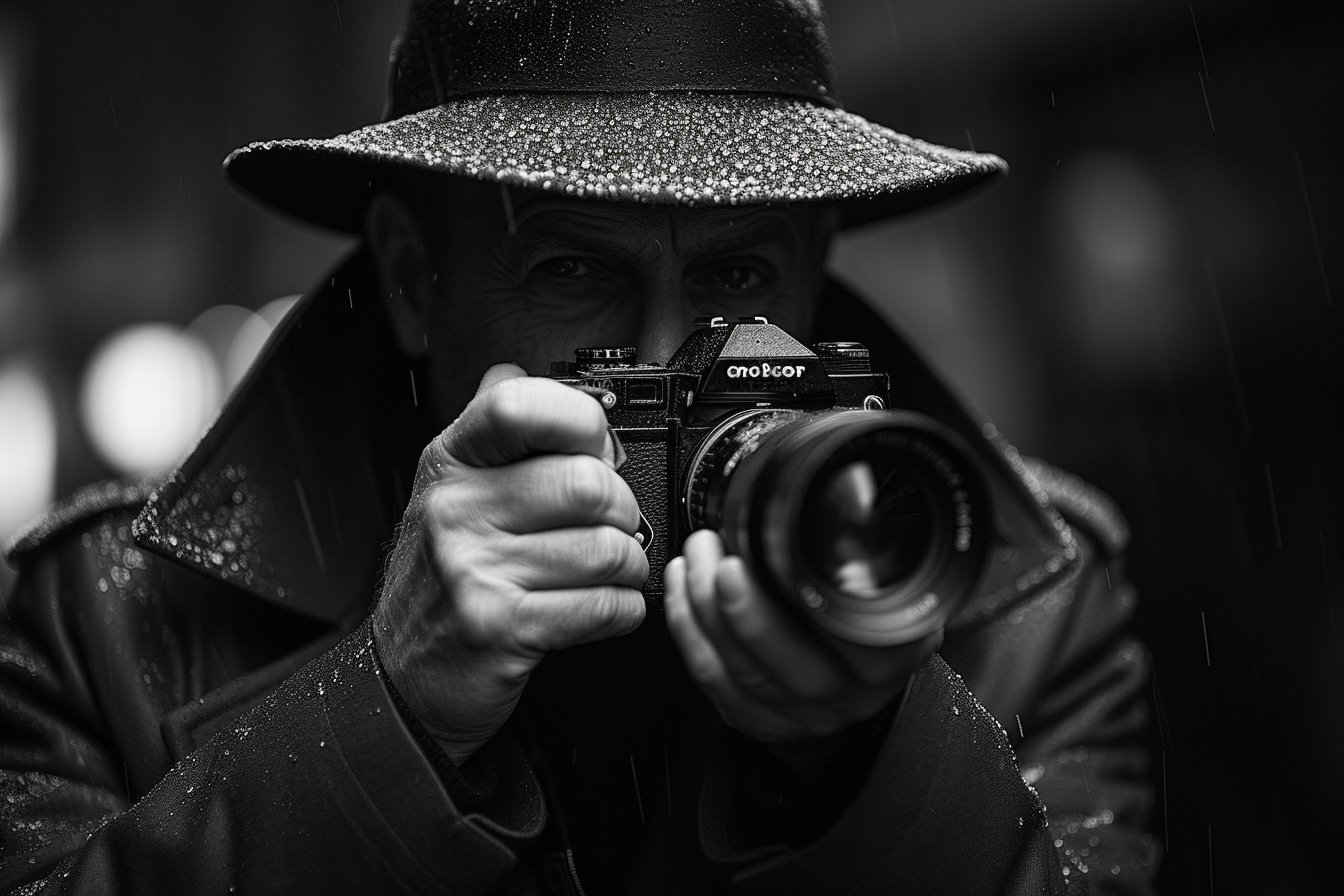
The allure of monochrome imagery
Black and white photography stands as a testament to the roots of the photographic art form. Stripping away the distractions of color, these monochrome images lean heavily on composition, contrast, and texture to convey emotion and narrate stories. A well-executed black and white photograph speaks volumes through its simplicity and requires a keen eye for detail and a comprehensive understanding of light and shadow.
Understanding the nuances of light
Light is the cornerstone of all photography, more so in the realm of black and white. Unlike color photography, where hues differentiate elements, monochrome photography depends on the varying shades of grey to define its subjects. Direct sunlight creates harsh shadows and may accentuate texture, while overcast conditions provide a more even tone, reducing contrast. Mastering the use of natural light is pivotal in shaping the mood of your black and white imagery.
Crafting composition with intent
Effective composition in black and white photography relies on the balance between light and dark areas. Leading lines, the rule of thirds, and frame within a frame are compositional techniques that guide the viewer’s eye and introduce dynamism into the picture. Pay attention to how these elements interact in the absence of color, allowing spatial relationships in the form of patterns, lines, and shapes to become the focal point.
Maximizing contrast through exposure
Manual exposure settings offer the photographer control over how bright or dark an image appears. Use spot metering to measure the light reflected off the subject correctly or to pinpoint the exact area in a scene you wish to expose for. Graduated filters, both in-camera and in post-processing, can also assist in balancing the exposure throughout the scene, ensuring that both highlights and shadows retain detail.
Embracing the power of post-processing
Even with the most meticulous in-camera technique, post-processing is an invaluable tool to enhance contrast and texture. Software applications offer sliders to adjust highlights, shadows, whites, and blacks, fine-tuning the image for the desired impact. The clarity and texture tools can add depth by emphasizing micro-contrasts within the textures, making details pop.
Selecting subjects conducive to monochrome
Some subjects lend themselves exceptionally well to black and white photography. Textures such as peeling paint, rough stone, or the intricate lines of a leaf are amplified in the absence of color. Portraiture in black and white can focus on the character and emotions of the face more closely, while architecture benefits from the pronounced play between light and shadow, highlighting form and symmetry.
Working with filters for dramatic flair
Physical filters attached to the lens can manipulate the image before it even reaches the camera sensor. A red filter, for instance, can make a blue sky appear almost black while making the clouds stand out prominently. Other filters like orange, yellow, green, and blue manipulate the scene’s contrast differently, offering a palette of tones to the discerning photographer.
The role of iso in texture and grain
ISO pertains to the sensitivity of your camera sensor to light. In black and white photography, one can sometimes use higher ISO settings to one’s advantage. The resultant grain from higher ISO values can contribute an organic feel to the image, reminiscent of classic film photography. Understand, though, that excessive grain can also detract from the finer details, so use this tool judiciously.
Dynamic range: the spectrum of tones
Capturing the widest dynamic range possible is crucial to maintaining detail across the tonal spectrum, from the deepest blacks to the brightest whites. Cameras with a larger dynamic range will allow more room to maneuver during post-processing, ensuring that the transition between tones in a black and white image is both smooth and impactful.
Comprehending the zone system
Developed by Ansel Adams and Fred Archer, the Zone System is a conceptual tool to help photographers visualize the translation of real-world tonality into the photographic medium. The system breaks down the tonal range into eleven zones, each one relating to a particular step from pure black to pure white. By recognizing these zones in the field, photographers can better control the tonal rendition of their final print.
Creating depth with dodging and burning
Dodging (lightening) and burning (darkening) are techniques carried over from the darkroom into digital post-processing. These methods allow for selective control over specific parts of the image, adding depth and directing the eye by subtly adjusting exposure after the fact. Careful application of dodging and burning can turn a good photograph into a striking piece of art.
Incorporating textures for visual interest
Textures can be amplified through the interplay of light, contrast, and post-processing. A photographer should look for scenarios where the texture becomes a central element of the composition—rugged landscapes, urban decay, or the delicate details in flora and fauna, for instance. Shooting at particular angles to the light source, such as side lighting, can throw textures into relief, providing depth and character to the image.
Continuous learning: the photographer’s path
The journey to excelling at black and white photography is continuous. Avid photographers immerse themselves in learning, drawing inspiration from the masters of the craft, and perpetually honing their skills. Embrace each shot as an opportunity to experiment with tones, contrast, and textures, and every photograph will become a step forward in the quest for mastery.
For photographers, black and white imagery is not only about capturing the world without color; it is an exploration into the essence of visual storytelling. Attention to detail, understanding of light, and post-processing fines are pivotal in this genre. By applying these tips, photographers will uncover the beauty found within the gradients of gray, forging compelling imagery that resonates on a profound level with their audience. Whether a novice or seasoned professional, the path of black and white photography is a rewarding, infinite journey of learning and artistic expression.


Leave a Reply